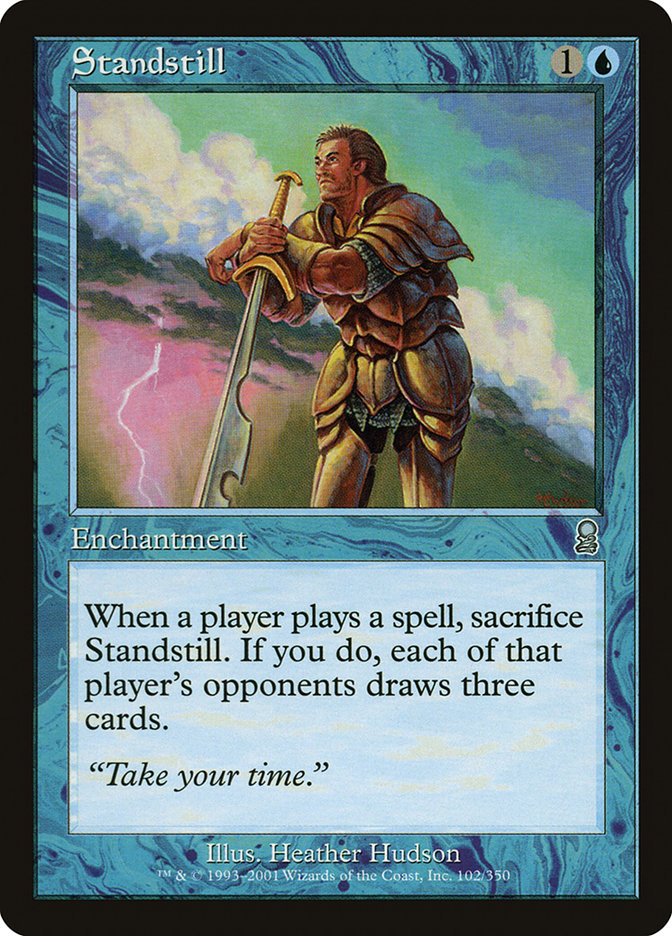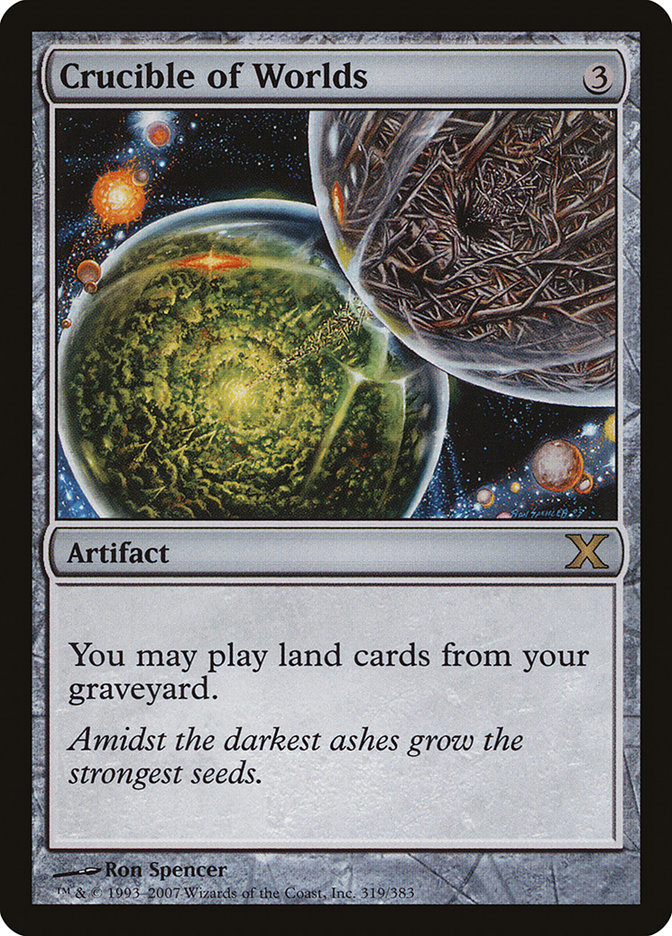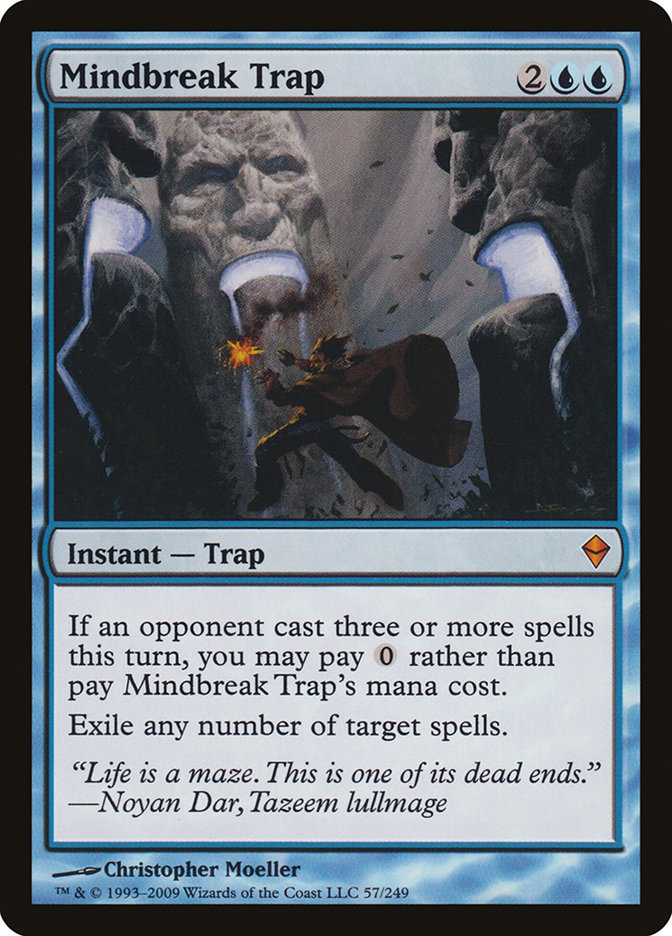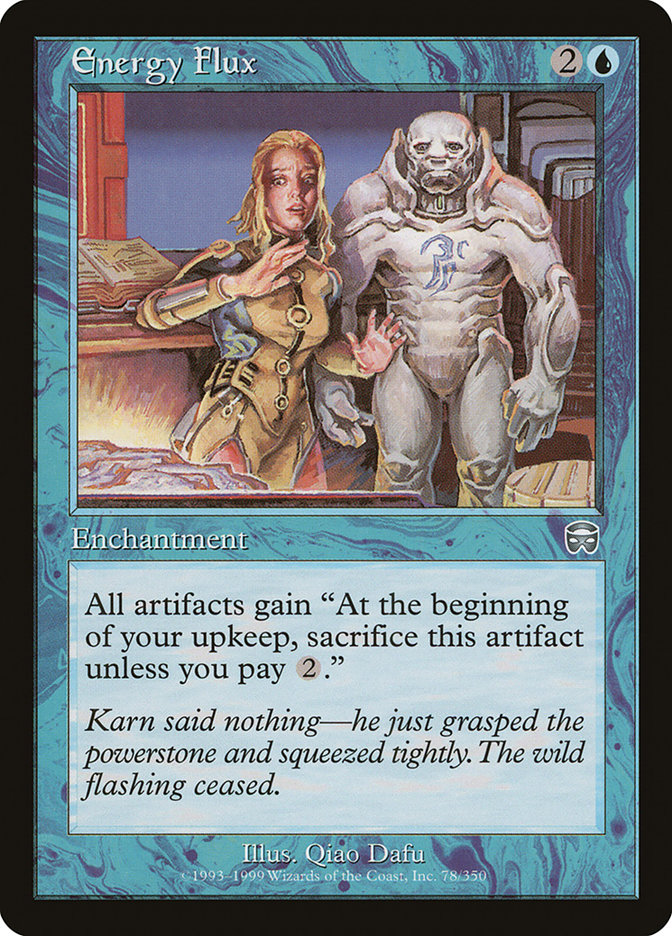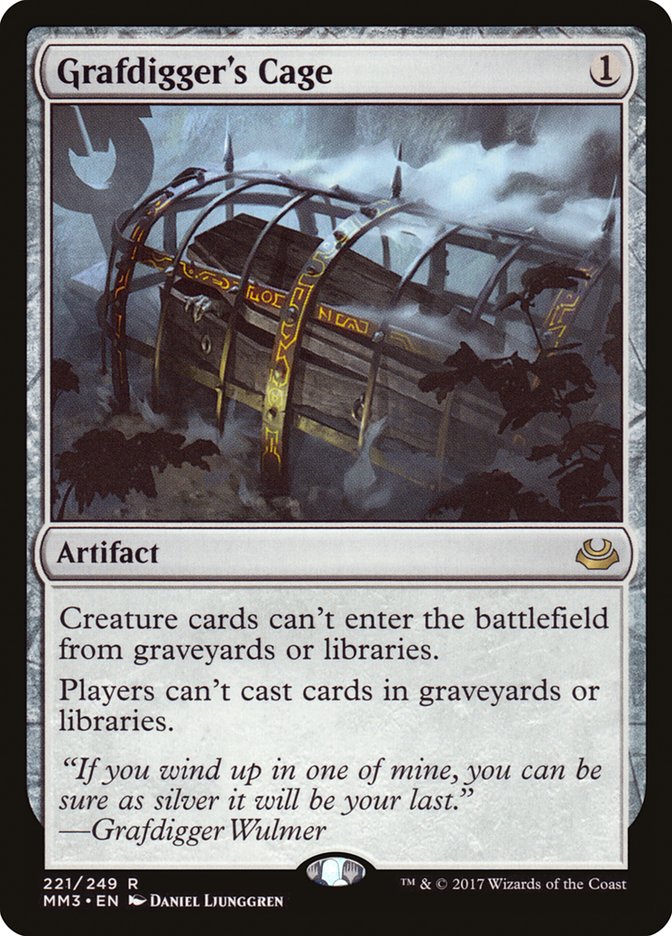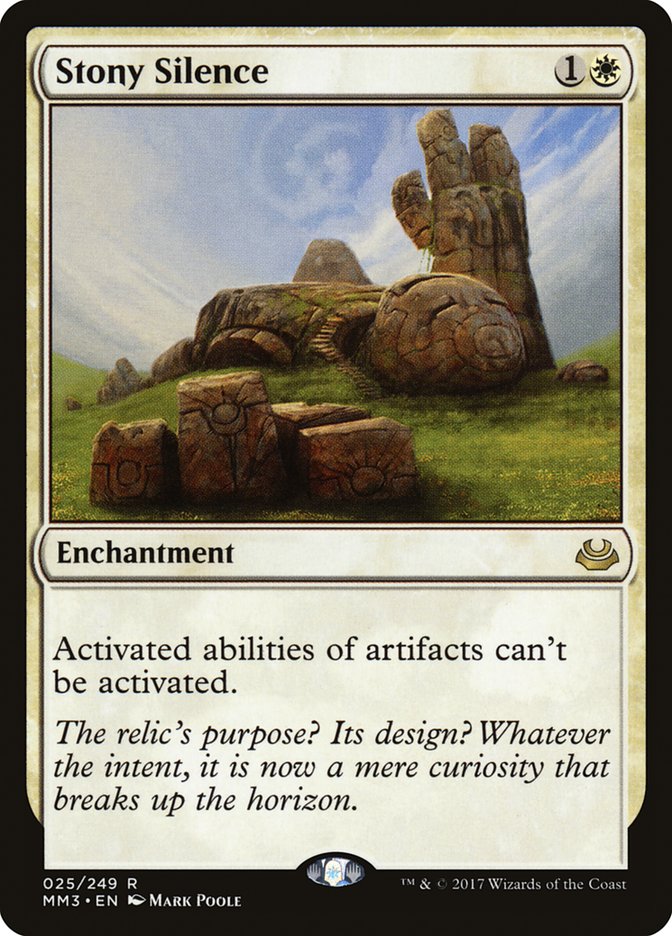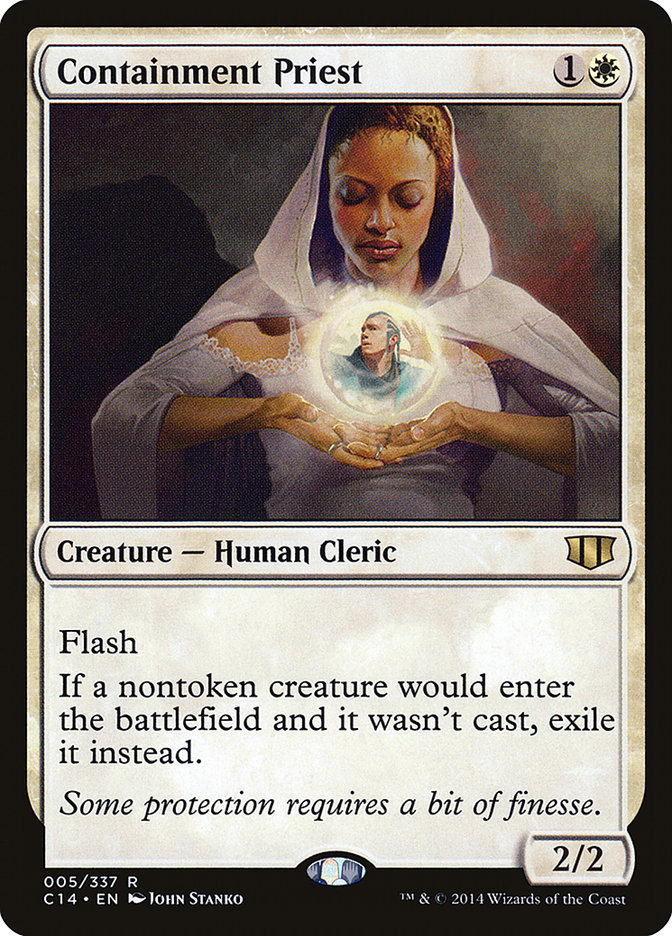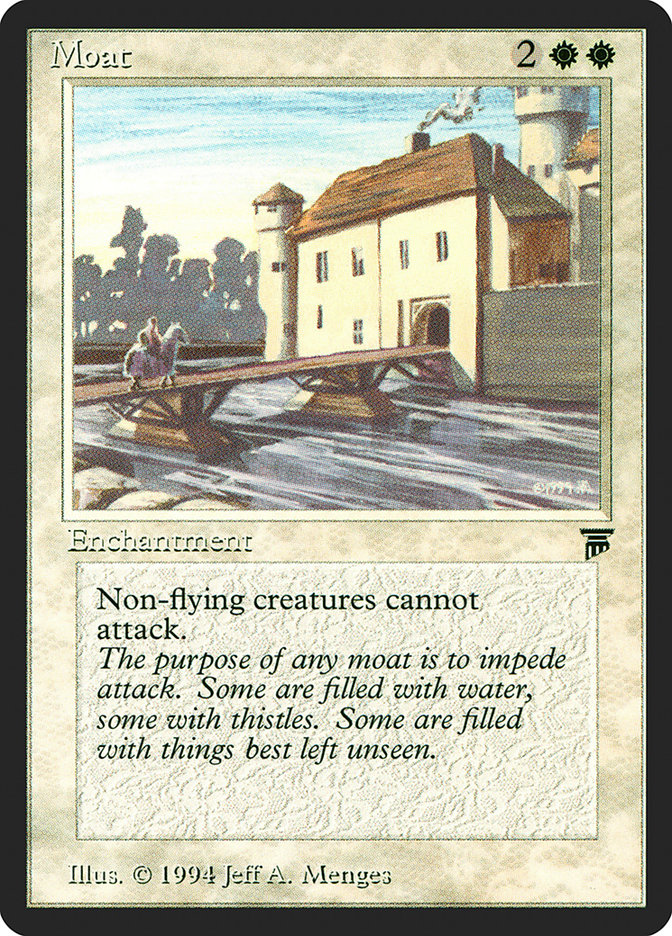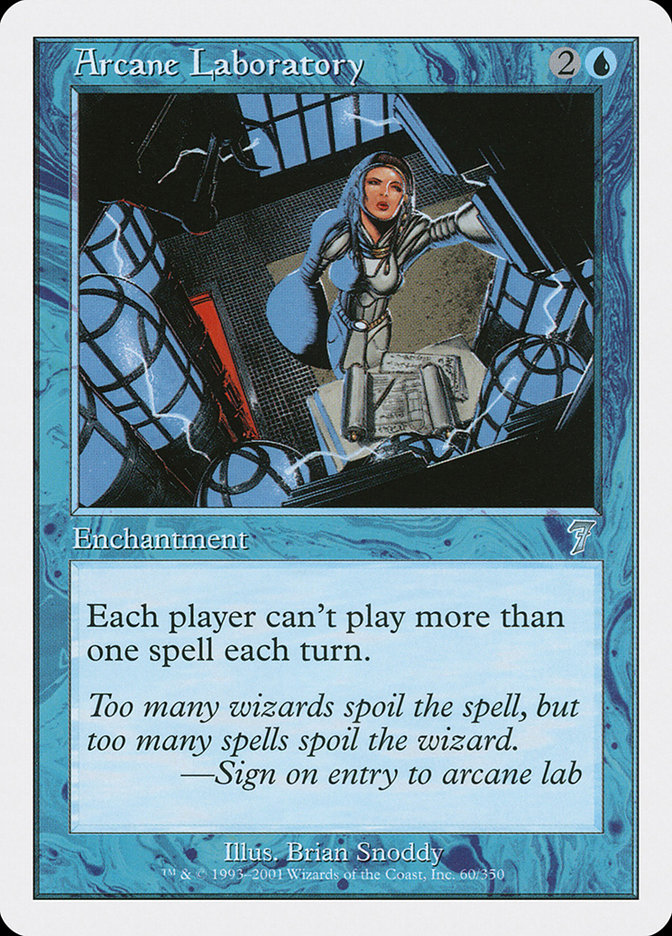Vintage Landstill is an archetype I’m intimately familiar with, having
played variations of it for almost a decade. While Landstill may forgo
doing anything flashy in the format, it’s both consistent and powerful and
can be fiendishly frustrating to play against in the right hands. For
reasons I don’t quite understand, drawing blue cards and attacking for two
damage a turn isn’t considered flashy.
Landstill is a classic control archetype that uses its namesake,
Standstill, as its primary card drawing engine alongside creature-lands
like Mishra’s Factory and Faerie Conclave. The deck aims to Stifle the
opponent’s early development with “free” countermagic and slow the overall
pace of the game with Standstill. The way the deck typically wins is with
Jace, the Mind Sculptor to achieve overwhelming card advantage where you
can disrupt all of your opponent’s cards, whereby actually winning is
incidental.
You will also get a significant edge against players who play very poorly
against the card Standstill; not breaking it when they should be or trying
to “out-wait” you, which I will go into detail about later. While this deck
used to be fairly popular in the Legacy format, it remains a fixture of
Vintage as a result of three main factors. First, Vintage is a much more
spell dominant and less creature-focused format than Legacy is, allowing
Standstill to be cast into neutral game states with much more regularity.
Second, the legality of Mental Misstep in concert with other cheap
disruption allows the Landstill pilot to adequately defend itself against a
lot of early opposing development. Lastly, having access to supplemental
broken card draw like Ancestral Recall, Dig Through Time, and Library of
Alexandria, unsurprisingly, gives the deck a significant power boost.
While historic Landstill lists were usually blue and red, the Vintage
metagame has evolved to a point where white is the most desirable color to
pair alongside blue. For a control deck, Swords to Plowshares is much more
versatile at answering threats out of Workshop decks than Lightning Bolt
is. Swords to Plowshares also cleanly handles Hollow One and Gurmag Angler
that Dredge decks typically play after sideboard, as well as most creatures
presented by blue archetypes. However perhaps more importantly, playing
white also affords you a wealth of extremely powerful hate cards for
Vintage. Containment Priest, for example, is an extremely versatile hate
card that handles Oath of Druids, Dredge, and functions well in control
mirrors strictly as a 2/2 body with Flash. While red is still a very
desirable color to play in Vintage because of Pyroblast and the best
artifact removal spells, Landstill has a difficult time stretching its
manabase past two colors. This is chiefly a consequence of the quantity of
colorless lands like Mishra’s Factory and Wasteland that the deck needs to
play.
Creatures (2)
Planeswalkers (3)
Lands (21)
Spells (34)

This list is what I’ve been testing with and tuning on Magic Online to some
fairly reasonable success. Those unfamiliar with Vintage play patterns
might be surprised by some card choices. Most notably, Landstill eschews
most of the one-mana cantrips such as Preordain and Ponder that replace
themselves in favor of the card Standstill. Not only do these cantrips play
poorly with a resolved Standstill, but spending early turns cantripping is
not something this deck wants to be doing – instead preferring to hold up
mana for instant speed interaction. Because Landstill does not hinge on
resolving cantrips and plays more lands than most Vintage decks (21),
you’re a lot more resilient to taxing effects like Sphere of Resistance and
Thorn of Amethyst and less exposed to opposing Mental Missteps. Wastelands
and Strip Mine are also a crucial element of the manabase to deal with
problematic lands the Vintage format presents (Library of Alexandria,
Tolarian Academy, and Cavern of Souls to name a few).
As is with Legacy, Wasteland is also very useful at slowing players down or
taking them off specific colors. While previous iterations of U/W Landstill
commonly played Crucible of Worlds to garner even more utility out its
manabase, I personally believe it to be no longer a great option.
Crucible/Strip Mine-locking Workshop decks is usually too slow as the most
popular version (Ravager Shops) plays out actual creature threats at a high
velocity that need to be answered. Dack Fayden also sees more play in
Vintage than ever and running the risk of playing out Crucible to a
potential Dack is much too high for my liking.
U/W will typically only play with two copies of Snapcaster Mage, with its
main utility of being able to recast restricted cards like Ancestral Recall
and Time Walk. Flashbacking counterspells is extremely mana intensive but
obviously still relevant in a pinch. The available counter suite is fairly
straightforward with the exception of Mindbreak Trap. While Mindbreak Trap
sees mostly fringe play in other formats, the card can be extremely potent
in Vintage. While clearly very effective at countering Storm cards like
Mind’s Desire and Tendrils of Agony, it can be very devastating in stack
battles and in early turns of the game where players are casting their
Moxen and fast mana that “turn on” the Trap. A very common strategy is to
cast spells in response to your opponents’ to provoke further response and
then exile all their spells for no mana investment. A sequence like “an
opponent leading with Mox Ruby into Dack Fayden, you casting a Dig Through
Time in response, prompting your opponent to Force of Will the Dig Through
Time” can be absolutely backbreaking when you then Mindbreak Trap both
their Force of Will and Dack Fayden. The added utility of this card is the
fact that it exiles instead of counters (a fairly unique effect), thus
preventing “trapped” cards from being regrown with the likes of Snapcaster
Mage or Yawgmoth’s Will. Stopping uncounterable spells can also be hugely
relevant and I’m not close to kidding when I say I have Mindbreak Trapped
cards like Sphinx of the Final Word, Carnage Tyrant, and Banefire multiple
times.
The maindeck removal is three copies of Swords to Plowshares, Supreme
Verdict, and Hurkyl’s Recall. While Supreme Verdict can be clunky to cast,
it is, at worst, a blue card to pitch to Force of Will; and, at best, the
cleanest answer to messes of tokens created by cards like Monastery Mentor
and Young Pyromancer. Hurkyl’s Recall is something of a sweeper as well
that buys you significant tempo against Workshop decks and has random
utility in bouncing a Blightsteel Colossus and “countering” a Paradoxical
Outcome.
The late game power of the deck revolves around Jace, the Mind Sculptor.
While three copies may seem a bit excessive, U/W Landstill is one of the
best Jace decks in the format. Landstill protects Jace very well and
Standstills with Jace on the battlefield basically have to broken
immediately, giving you overwhelming advantage where the opponent becomes
hard-pressed to resolve anything of consequence.
Although the four copies of Standstill are considered to be the draw engine
behind the deck, I look at the card as more of a stall engine. Often,
you’re ambivalent about going up on raw card advantage against your
opponent, as the real prize is slowing down the game to a state where no
one is doing anything. Many opposing Vintage decks get their hands
congested with artifact mana sources and cantrips that they can’t deploy
without breaking the Standstill, while you’re content hitting your land
drops and drawing into powerful, reactive spells. Landstill is designed
around Standstill and plays very well under it. When players refuse to
break it for long periods of time, you’ll often be able to establish your
manabase and have the time to sculpt a very disruptive hand against your
opponent. As mentioned earlier in this article, you can get a significant
edge against opponents who play against this card poorly. Although there
are many nuanced situations as to when you should break the Standstill
against a Landstill deck, you should typically either break it immediately
or break it at their end step and force them to discard down to hand size.
Too many times, I see Workshops players trying to beat a Standstill player
with their own Mishra’s Factories, thus giving the Landstill player many
undisrupted turns, positioning themselves to establish their own powerful
spells.
Because artifact-based Workshop decks have no instant speed effects,
Landstill can simply break their own Standstill at end of turn and have the
Workshops player discard their extra cards – a very minimally advantageous
effect. As a general rule of thumb, aggressive/combo strategies should be
more willing to break immediately while slower control decks can afford to
wait longer and break end step. Additionally, I will note that using your
own Force of Wills to get your own Standstills to resolve is not something
I would advise and a mistake I frequently see many newer or inexperienced
players make. When your opponent breaks Standstill immediately, essentially
exchanging Force of Will and another blue card for three random cards is
not especially exciting.
As is the case with most Vintage decks, the sideboard mostly consists of
hate cards against Dredge and Workshop decks, however a lot of the specific
card choices have application in a range of matchups. A resolved Energy
Flux is devastating against Workshop decks especially in conjunction with
Wastelands; akin to a supercharged The Tabernacle at Pendrell Vale for
their entire battlefield. Grafdigger’s Cage is cheap and disruptive enough
against Dredge that it’s worth having sideboard space for.
As for the more flexible spectrum of the sideboard space, Stony Silence is
a “sideboard” card that deserves special attention; so good that it is
maindeck-able. While Null Rod strategies have always been a cornerstone of
the Vintage Format, this effect is currently extremely desirable. Because
U/W Landstill only plays two Moxen and Black Lotus, you get to play Stony
Silence without affecting your own manabase too significantly. Stony
Silence typically wins games on the spot against Paradoxical Outcome decks
and can be very useful against Workshop strategies. Even at its worst, it’s
a very solid “X for 1” against the omnipresent artifact mana base of
Vintage that constricts how much your opponent can play out on a given
turn. This, in turn, increases the potency of your own counterspells like
Flusterstorm. For these reasons, I choose to maindeck one copy of this
effect.
When playing U/W Landstill, you typically want to be keeping hands that
have early disruption and have pathways to card draw like Standstill, Jace,
the Mind Sculptor or the restricted draw spells. Hands with only disruption
run the risk of not going anywhere past the early turns and hands with only
card draw run the risk of being at the mercy of your opponent. Personally,
whenever I evaluate opening hands in Vintage I try to envision the
circumstances where my hand will be great and what kind of opposing hands I
may lose to – then weigh the odds accordingly. It’s very important to have
a game plan and a goal at the onset to how you want the game to progress
and be malleable at changing your goals when circumstances change.
Hand #1:

Hand #2:

These two hands, I would both consider excellent. Hand #1 is very
disruption heavy that when exhausted can be reloaded off Standstill. As an
added note, you don’t always want to jam Standstills at your first
opportunity. The preferred play pattern is to engage in counter wars with
your opponent and deploy Standstill after the fight, pulling you way ahead.
Hand #2, while not as dense with counterspells, has a pathway to a fast
Jace, the Mind Sculptor with the help of Mana Drain backed up by a way to
protect it.
Hand #3:

Hand #4:

Hand #3 is very ambitious especially on the draw. You have no ways to
interact with your opponent in the opening phases of the game and by the
time you get around to casting Standstill, it might not even be castable
depending on what your opponent commits to the battlefield. Hand #4 is very
borderline. I would certainly have no qualms keeping a hand like this
against a Storm deck, but it’s also a hand that doesn’t go anywhere and you
really need to find card draw to pull ahead.
As far as matchups are concerned, Landstill is most favorable against decks
that do not commit pressure to the battlefield and look to resolve key
cards. Oath of Druids, Storm, and Paradoxical Outcome decks are all very
disruptable by Landstill’s countermagic suite and sideboard hate. Blue
Xerox archetypes (that is, blue decks that are predicated on resolving
redundant cantrips) tend to be even to slightly favorable depending on
their precise configuration, while Workshop matchups are usually fairly
even. The worst matchups for Landstill are Dredge decks by a country mile
and aggressive U/R Delver-type strategies. U/R Delver typically plays a
very aggressive game with a lot of cheap disruption in Wasteland, Spell
Pierce, and sometimes Daze that can easily go under you, while Dredge
simply plays an entirely different game of Magic that negates the
usefulness of most of the maindeck.
As is true for any control deck in any format, you always must be cognizant
of the overall metagame and constantly tune your maindeck and sideboard to
adjust to what other players are doing. As examples, I would be willing to
maindeck Containment Priest in metagames with a lot of Dredge, control
decks, and Oath of Druids. Moat is a very reasonable control card in
Vintage against a swath of creature-centric strategies such as Humans, U/R
Pyromancer, and Eldrazi. In a very combo-heavy environment, I most
certainly would have access to either Ethersworn Canonist or Arcane
Laboratory. By playing white you have a large repertoire of hate you can
bring to the table and no shortage of intricate deckbuilding
considerations. These decisions are an enduring reason why I love playing
Eternal formats and specifically Vintage and a big reason why as a control
player you need to be constantly aware of your surroundings.
Ever since the last batch of Vintage restrictions in Gush and Monastery
Mentor, Landstill has been a strong contender in the field. While playing
Landstill optimally requires quite a lot of practice and format exposure,
it can also be a great entry deck for getting into Vintage. Because the
deck is not very reliant on artifact mana, it can be played as a reasonable
budget option by dropping the two Moxen and Black Lotus. Of course, you
lose some explosive, broken draws (what blue mage doesn’t drool at the
thought of dropping Jace, the Mind Sculptor on Turn 1?), but you also get
more space for lock pieces like Stony Silence.
Whether it is played with Power or not, I hope you’re just as excited as I
am for SCG CON’s Power 9 Series Vintage tournament and I look forward to
seeing if my choice archetype can “take it’s time” to the Top 8! As I’m
always very enthusiastic to talk about Vintage, please don’t hesitate to
comment or reach out to me directly if you have any thoughts or questions
about this particular archetype or the format as a whole.

